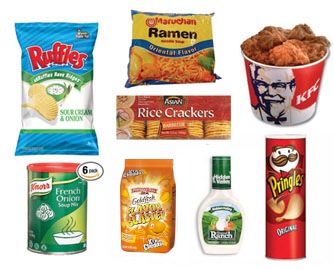If you have ever looked at the ingredients list on any of
your favourite mascaras, tampons, squeeze bottles, trash bags, or orthopedic goods
you have probably come across polyethylene. (1)
Polyethylene is basically the photo-bomber of anything
plastic. It is composed of ethylene molecules (CH2=CH2) which have been bonded
together through the process of polymerization. (1) During polymerization the
double bond between the carbon atoms is broken which allows another carbon to
attach to one of the carbon atoms of the first ethylene molecule. (1) If it’s a
little unclear just think of two friends holding both of each others hands.
When they let go with one hand it frees them up to hold onto someone else’s. This
continues to happen until you have a chain of people holding hands which is similar
to a polyethylene chain, with the people’s joint arms representing the carbon bonds.
The chain length and side branches of polyethylene are the key
factors in determining what type of plastic it will be used to make. Longer
polyethylene molecules with no branches are generally used to make sturdier
products such as pipes. (1) Shorter molecules with branches tend to end up used
in films or thinner plastics. (1)
In regards to any danger being related to polyethylene’s
presence in the products around your home, it’s negligible. It would take an oral
dose of more than 2 g/kg in order to kill a rat. (2) A 145 g oral dose would be
needed to kill a 165 lbs person at the same ratio. Even though polyethylene in
harmless it can still cause some irritation should it get into your rabbit’s
eyes, but there is no conclusive evidence of it being harmful to humans. (2)
Something you may not know about polyethylene is that is was
discovered accidentally twice. It was only two years after it’s re-discovery that
J.C. Swallow and M.W. Perrin figured out a way to produce it commercially. (1) Unfortunately;
it was difficult to produce polyethylene of standard quality and the companies
making it were facing financial ruin. That was until Wham-O began to produce
hula-hoops out of the lower quality products. (1) This saved the industry while
scientists fiddled around trying to produce a more consistent polyethylene by
way of a more efficient reaction involving catalysts. (1)
References
1)
Polyethylene. (2006). In N. Schlager, J.
Weisblatt, & D. E. Newton (Eds.), Chemical Compounds (Vol. 2, pp.
579-582)
2)
Final report on safety assessment of
polyethylene. (2007) International Journal of Toxicology. Retrieved Oct. 22,
2015, from http://toxnet.nlm.nih.gov/cgi-bin/sis/search2/f?./temp/~odtn3q:1
3) Wikipedia. Polyethylene. Retrieved October 30, 2015 from https://upload.wikimedia.org/wikipedia/commons/5/55/Polyethylene_balls1.jpg

